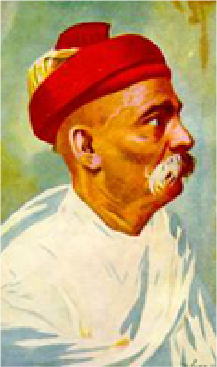Pune, once the seat of power of the Marathas, is a city located on the confluence of the rivers, Mula and Mutha.
The history of the growth of Pune from a small village, Punawadi, to the fastest growing metropolis in India, is highly impressive. The landscape used to be dotted with temples adorned with beautiful sculptures, built at various points of time. Most of these temples were destroyed in the battles that ensued.
In the year 1630 AD, the queen Jijabai Bhosale arrived in Pune with her son Shivaji. Young Shivaji, who was only aged 12, was disturbed by the pathetic plight of the mavals. Shivaji vowed to liberate the mavals from the Mughals. At the same time, an idol of Lord Ganesh was found near the house of Vinayak Thakar, who used to reside close to the residence of the queen, Jijabai Bhosle. Jijabai perceived this as an auspicious moment and promptly built a temple, which is today known as the famous Shri Kasba Ganpati Mandir. Young Shivaji started building the empire of ‘Swarajya’ after this auspicious moment.
Since then, Pune is also known as the city of Lord Ganesh and witnessed the cultural development. Lord Ganesh is the Lord of knowledge and the destroyer of obstacles. Therefore, Lord Ganesh is worshipped on every auspicious occasion. The Peshwas were ardent followers of Lord Ganesh. During the regime of the Peshwas, Shaniwarwada--the house of the Peshwas witnessed the grand celebrations for Lord Ganesh.
In 1893, Bal Gangadhar Tilak, the great freedom fighter of India, initiated the Ganesh festival with the intention to bring like-minded people together to share ideas and exchange thoughts on freeing India from the British regime. Tilak started celebrating the Ganesh festival from his own house at Kesari Wada. Others followed and started celebrating the Ganesh festival.
On this day, the offerings to the Lord, which till then was a private affair in every home, were brought out in the open and a common platform was created. Thus, came into being, the ‘Sarvajanik Ganpati’ in the year 1893. This brought the people together and people heard ‘kirtans’ (devotional songs) which resulted in mass education and helped bridge the gap between the different classes in society. It also created awareness among the people regarding the British regime. Solutions to common sufferings were also resolved at the gatherings. Tilak’s endeavor led to the formation of numerous clubs or mandals in Pune. This gave a new dimension to the Ganpati festival.
In the Ganesh festival, each mandal had its own special Ganesh idol made. On the 10th day of the Ganesh festival, the idol of Lord Ganesh is immersed in the river. Kasba Ganpati, being the local deity of Pune, was conferred the privilege of immersing the idol of Lord Ganesh first in the river.
